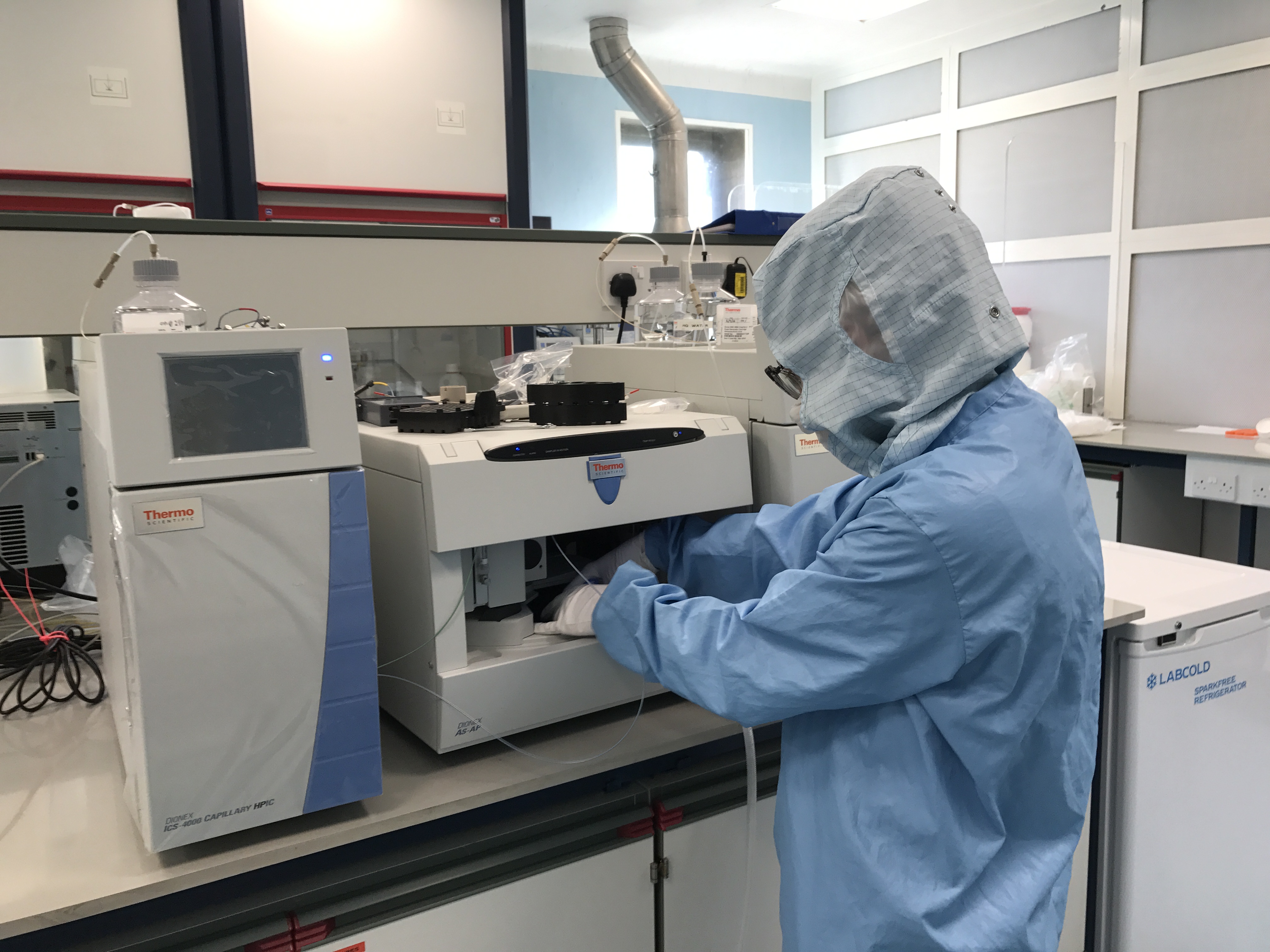SCIENCE IN THE LAB: From the Polar Plateau to Cambridge
19 October, 2017
A new blog from Polar Atmospheric Ice Chemist Dr Holly Winton, who is part of the ISOL-ice research project, explaining the process from fieldwork on the Polar Plateau to laboratory work in Cambridge.
Last season, myself and two other members of the ISOL-ICE team – Markus Frey and Becky Tuckwell – travelled to the summer-only German research station called Kohnen. One of our aims was to drill an ice core spanning a period of 100 years, and we successfully drilled to 120 m.
The ISOL-ICE ice cores, snow and aerosol samples have since arrived safely, and still frozen, at BAS Cambridge after a long voyage on-board the Mary Arctica from Antarctica to Europe.

During July, the ISOL-ICE team has been busy sectioning the ice core into sections for trace chemistry, nitrate isotopes and archive. We suited up in our polar clothing, entered the purpose built -20°C freezer and felt like we were back at Kohnen Station (minus the wind). The ice core is now processed and ready for trace chemical analysis using continuous flow analysis (CFA), where we will be looking for annual signals in the sodium, ammonium and calcium record, and volcanic horizons in the sulphate and dielectric profile to date the core. This analysis involves a team of four scientists prepping ice core sticks, continuously melting the ice on a melt head, and analysing the trace chemistry in the melt water. By measuring the electrical conductivity of the ice core, we have already identified a number of volcanic horizons that are used to constrain the dating of the ice core. Our results show that we have recovered an ice core that holds a climate record of least 1000 years.
We have also been busy working in the class-100 clean room at BAS measuring the trace chemistry in the snow and aerosol samples. This air-snow transfer study will help us understand how nitrate is cycled between the snow pack and atmosphere, how the UV proxy is recorded in the ice, and ultimately allow us to interpret the 1000-year ice core record of UV radiation.
